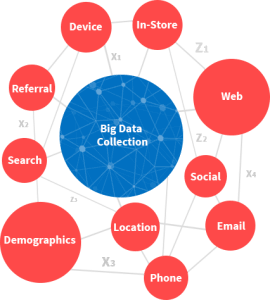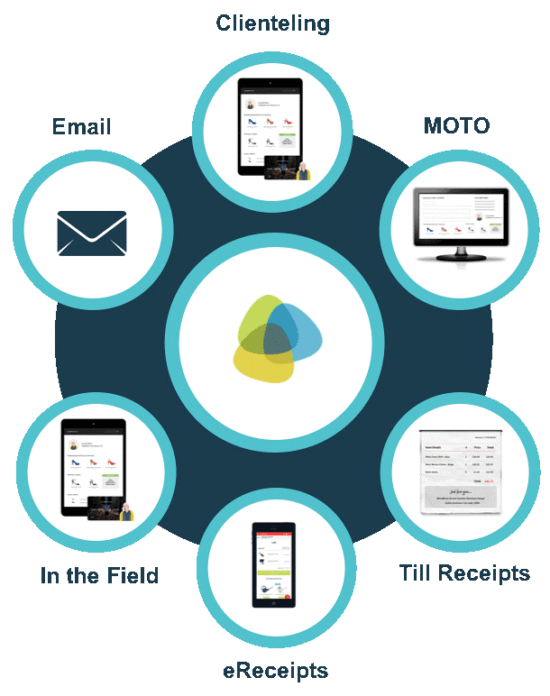Implementing the following 7 strategies for e-commerce personalization can be one of the most cost-beneficial decisions you can make towards increasing your online revenue, improving your online conversion and building a loyal and happy customer base.
Many businesses are finding it difficult to overcome certain pain points when trying to improve their online customer experience. Issues such as high bounce rate, poor search click through, low average order value, high basket abandonment rate, low repeat visitor numbers, low propensity to engage with offers and promotions, are to name but a few.
1. Improve your website conversion and customer loyalty
If your analytics is telling you that your homepage or digital marketing campaign landing pages have a high bounce rate and very low repeat visitors, then there is evidently a gap between what the visitor was expecting to see and what they have been presented.
A website that presents irrelevant products and promotions, without dynamic and intuitive search or filtering options relevant to the visitor, will present a poor experience, resulting in a low conversion rate.
E-commerce personalization, using Artificial Intelligence (AI) and constant machine learning, enables you to present products and offers that are relevant to each customer group whatever their customer profile.
Personalized search and merchandising offer predictive relevance of products and recommendations to the individual proven to maximize revenue. Driven by AI, based on customers likes, dislikes, behaviours and trends and your own customer targeted recommendations, personalized search and merchandising are highly effective to improving online conversion rates.
In addition to this, e-commerce personalization allows you to overlay enriched marketing campaigns and product recommendations targeted at multiple customer segments that meet criteria set by you.
2. Provide a unique experience to each of your customer groups
Gone are the days of having only one generic offer on your website for all your different customers. Each of your customers will have arrived at your site to whichever landing page from a different digital source, have different requirements and tastes, different budgets and different perceptions of your brand. Marketing to the needs of all your customer groups individually can be a challenge.
AI based e-commerce personalization platforms collect behavioral data from every single website visitor including views, purchases, searches and even time of day or amount spent. This data is then analyzed and relationships are identified between different default customer segments and the products that you sell online, to determine relevant product recommendations based on predictive behavior.
Some platforms also allow you to define your own segments or extending those configured by the platform using a large range of behavioral and CRM-based conditions. Conditions include time habits, visits, favorite brands or average order value, time since last order.
Once your segments have been set up, you can target each customer segment by overriding merchandising zones across your website. You may decide to show a different home page banner to first-time visitors, special cart promotion to VIP customers or offer 20% off during a seasonal period for all customers who have not made a purchase in the last 6 months. The options for personalized merchandising and campaign options are endless.
3. Get a handle on your data
 Today’s marketers are sometimes daunted by the large volume of customer data collected daily. Not only the volume but the challenge of translating this data into tangible insights usable across the marketing strategy can be extremely time consuming and susceptible to expensive human errors.
Today’s marketers are sometimes daunted by the large volume of customer data collected daily. Not only the volume but the challenge of translating this data into tangible insights usable across the marketing strategy can be extremely time consuming and susceptible to expensive human errors.
Within marketing and personalization, applying AI and machine learning is one of the best ways to get started with handling the volume of data. This Big Data can be analyzed in real-time that far exceeds the speed humans can achieve. The AI never stops learning. This will predict the propensity for a visitor to convert based on historical interactions of visitors and customers with the website. More importantly the AI can provide real-time insights and opportunities into the performance of your personalized site search, behavioral merchandising campaigns and personalized email marketing.
4. Deliver a personalized experience across all your customer touch points
 One of the challenges perceived by marketers when trying to create an e-commerce personalization strategy is how to achieve this seamlessly across all marketing channels. Not only across websites and email but also against all customer touch points whether in-store or face-to-face.
One of the challenges perceived by marketers when trying to create an e-commerce personalization strategy is how to achieve this seamlessly across all marketing channels. Not only across websites and email but also against all customer touch points whether in-store or face-to-face.
There are several providers now in the market that enable companies to take the insights from their customer data and present product recommendations, using API technology, allowing you to present these recommendations into your points of sale, including till receipts, e-receipts, sales account details and mail and telephone order platforms.
Once your segments have been set up, you can target each customer segment by overriding merchandising zones across your website. You may decide to show a different home page banner to first-time visitors, a special cart promotion to VIP customers or offer 20% off during a seasonal period for all customers who have not made a purchase in the last 6 months. Again, the options for creating targeted and relevant personalized merchandising campaigns are countless. The options are endless.
5. Prioritize areas on your website for serving recommendations and marketing campaigns
There is a tendency to lean towards a straightforward marketing promotion in your hero banner on your homepage. Although a good percentage of visitors will arrive here, the challenge presents itself when the other 50% visitors enter your site on different pages sometimes never seeing your homepage.
E-commerce personalization allows you to create effective merchandising zones across your entire site. Consider the key landing pages you are promoting as well as the customer journey taken through a typical visit. In addition, consider the opportunities tailor those global key areas on your site seen on every page visit such as global headers and mega menus. Finally, don’t forget your all-important basket and checkout process which can be a good opportunity to cross sell and up sell key products and promotions.
6. Be confident that e-commerce personalization is viable and will not impact on your team’s resources
Research has shown that there is a fear within businesses that adopting AI e-commerce personalization will somehow lead to marketing roles becoming redundant or require additional head count to manage.
With the rapid growth of customer data now becoming readily available from the explosion of e-commerce websites in the last 10 years, e-commerce personalization should be an integral strategy that threads through your entire marketing mix. Customer expectations are different today and e-commerce personalization simply allows you to market strategically to meet those needs. Artificial intelligence and machine learning are the only way you are going to be able to get to grips with the vast amount of customer data you hold, without which massive opportunities for sales will be missed. Automated AI can work hard in the background to understand your data and allow you to focus on the enriched marketing campaigns that you love.
7. Measure the commercial benefit of creating an e-commerce personalization strategy

As with all marketing investment it is critical that you can show the commercial benefit to the budget holders. Being unable to do this makes the decision-making process difficult to complete.
Prior to investing in e-commerce personalization, it is important to benchmark how well your website and emails are performing. Ensure that the platform you are using provides you with an in-depth analytics and performance dashboard that shows you which search terms, recommendations, promotions and campaigns are giving you the best return that are directly attributable to the platform being used.
E-commerce personalization buyer’s guide
Learn everything you need to know to start implementing e-commerce personalization in your business. Start improving your conversions and boosting your revenues with our comprehensive buyer's guide.
Access the
At PureClarity we can help you establish an effective e-commerce personalization which will help you achieve and maybe even smash your online revenue targets. Why not get in touch today and we can chat about how we can make this happen for you.
Thanks to Joanne Burman for sharing her thoughts and opinions in this post. Joanne is the Digital Marketing Manager at
PureClarity and has over the last 12 years worked in the E-commerce and Digital Marketing field across several B2C sectors including retail, healthcare and leisure, helping companies devise clear strategies to grow their online business. From exploring new technologies to try and create a more tailored online shopping experience through to building customer and brand loyalty she has delivered growth targets in all her roles to date. Jo, as well as loving her morning coffee, has a strong belief that data has become the new business currency and the more insight companies have into their customers behaviour the more they can tailor their marketing and E-commerce strategies to enable growth. You can follow PureClarity on
Twitter or on
LinkedIn.



 Today’s marketers are sometimes daunted by the large volume of customer data collected daily. Not only the volume but the challenge of translating this data into tangible insights usable across the marketing strategy can be extremely time consuming and susceptible to expensive human errors.
Today’s marketers are sometimes daunted by the large volume of customer data collected daily. Not only the volume but the challenge of translating this data into tangible insights usable across the marketing strategy can be extremely time consuming and susceptible to expensive human errors. One of the challenges perceived by marketers when trying to create an e-commerce personalization strategy is how to achieve this seamlessly across all marketing channels. Not only across websites and email but also against all customer touch points whether in-store or face-to-face.
One of the challenges perceived by marketers when trying to create an e-commerce personalization strategy is how to achieve this seamlessly across all marketing channels. Not only across websites and email but also against all customer touch points whether in-store or face-to-face.




